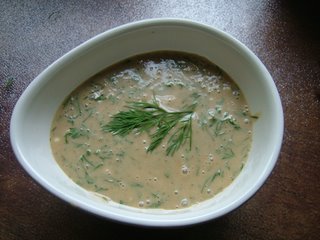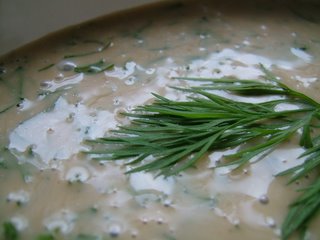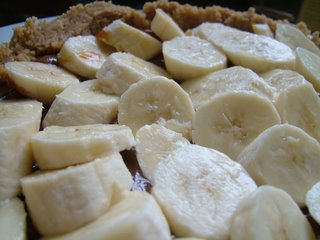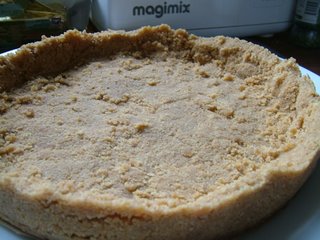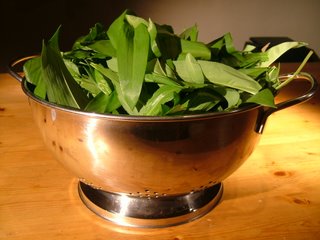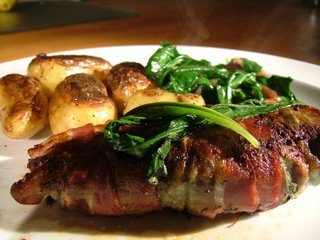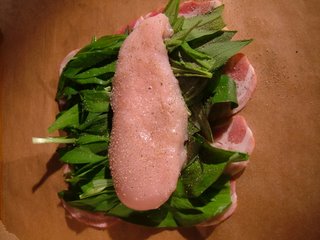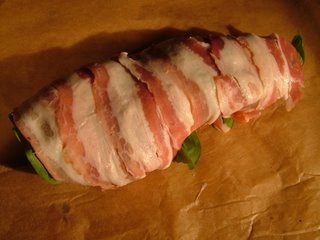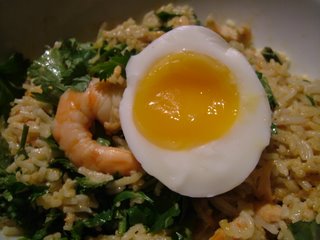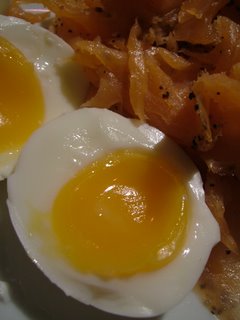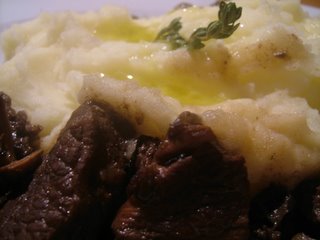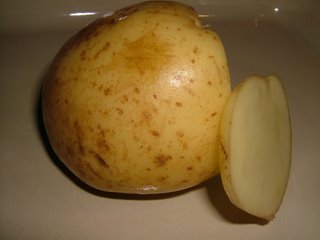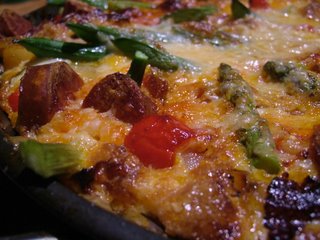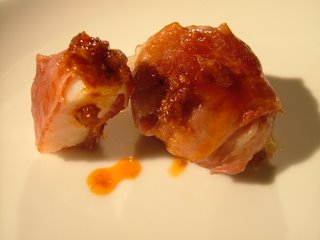 Waitrose is currently carrying a really good prosciutto affumicato – a cold-smoked, raw Italian ham. It’s delicious straight out of the packet, but I’ve been wondering for a few weeks what I could do with it in a recipe. It needed to be something simple; this stuff is very good indeed, and deserves not to have its flavour masked with too many other ingredients.
Waitrose is currently carrying a really good prosciutto affumicato – a cold-smoked, raw Italian ham. It’s delicious straight out of the packet, but I’ve been wondering for a few weeks what I could do with it in a recipe. It needed to be something simple; this stuff is very good indeed, and deserves not to have its flavour masked with too many other ingredients.
The answer came to me at the fish counter at the end of the day. There were a dozen queen scallops left – small, but sweet and firm, and not pumped full of weight-increasing water. (If you are shopping for shucked scallops, ignore any which are soft and white – they will be full of water. A non-watered scallop is a creamy colour, and is sometimes tinted the palest pink.) They were labelled with some money off, since they’d have gone out in the trash at closing time if they’d not been bought. I snaffled them along with a dozen slices of the prosciutto and ran in the direction of my frying pan.
Pork goes curiously well with shellfish. One of the most memorable meals I’ve had in years of French eating – I even lived in Paris for a bit, hunting down that perfect supper – was a silky, heady casserole of pig’s trotters and beautiful baby clams. (The restaurant was le Pont de l’Ouysse in the Dordogne, for those doing the stereotypically British thing this summer. Turn your speakers off before clicking that link – there’s French electric guitar midi on the jump page.) Of course, the Chinese specialise in the pork/shellfish combination; much of the filling in your dim sum is made from a minced prawn and pork mixture, and some of the more wonderful things I’ve had with scallops, preserved oysters and abalone have been heavy on the stewed belly pork.
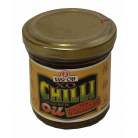 This being the case, I got some Chinese chilli oil out of the fridge to go with the scallops. I usually have a few jars on the go; one with a dried shrimp base, one with just garlic and chillis (surprisingly good in Italian sauces) and one with a dried scallop base. This was Way On‘s XO scallop version (many Chinese supermarkets in the UK carry it – if you can’t find it, use one with shrimp), and it finished the dish beautifully, making the scallops darkly rich and spicy without tasting characteristically Asian.
This being the case, I got some Chinese chilli oil out of the fridge to go with the scallops. I usually have a few jars on the go; one with a dried shrimp base, one with just garlic and chillis (surprisingly good in Italian sauces) and one with a dried scallop base. This was Way On‘s XO scallop version (many Chinese supermarkets in the UK carry it – if you can’t find it, use one with shrimp), and it finished the dish beautifully, making the scallops darkly rich and spicy without tasting characteristically Asian.
For twelve little parcels, you’ll need:
12 queen scallops, without roe
12 slices of prosciutto affumicato (use Speck if you can’t find the prosciutto)
1 teaspoon chilli oil (see above)
Olive oil
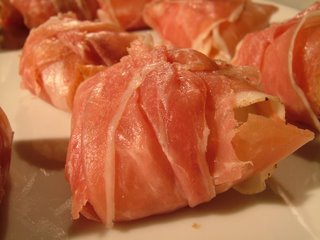 Wrap each scallop, parcel-style, in a piece of the prosciutto. You don’t need to secure with a skewer; the ham clings to itself nicely, and once heated will not be soft enough to unravel. Don’t season – there’s plenty of salt and spicing in the ham, and you’ll get heat from the chilli oil. Heat the olive oil over a medium flame for a couple of minutes.
Wrap each scallop, parcel-style, in a piece of the prosciutto. You don’t need to secure with a skewer; the ham clings to itself nicely, and once heated will not be soft enough to unravel. Don’t season – there’s plenty of salt and spicing in the ham, and you’ll get heat from the chilli oil. Heat the olive oil over a medium flame for a couple of minutes.
Cook the scallops for precisely four minutes on each side (you want the ham to be crisp and golden where it’s touched the pan, but the scallops should be only barely cooked in the centre to keep them sweet and toothsome). Remove to a serving dish and drizzle with the chilli oil – it’s packed with searingly hot chillis, so a little goes a long way. Serve with crusty bread and a Sauvignon Blanc.

